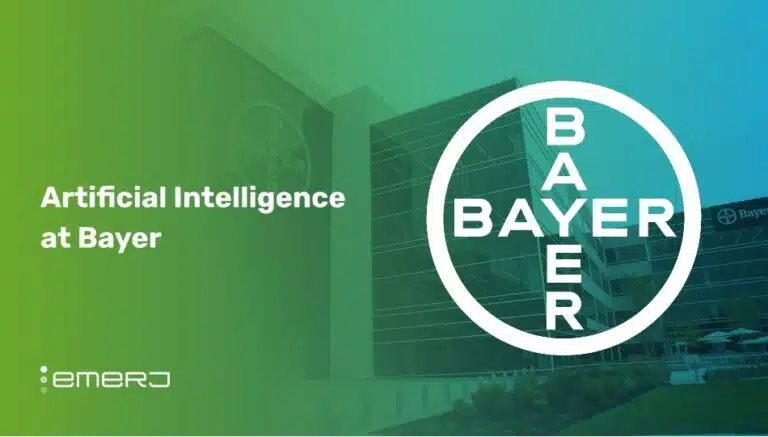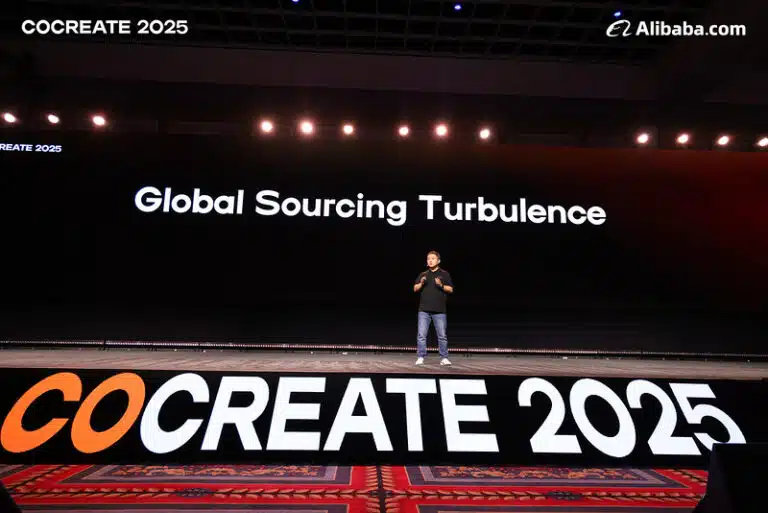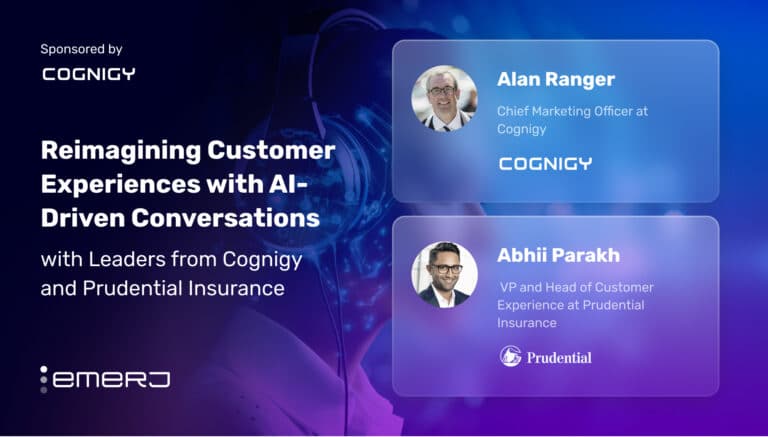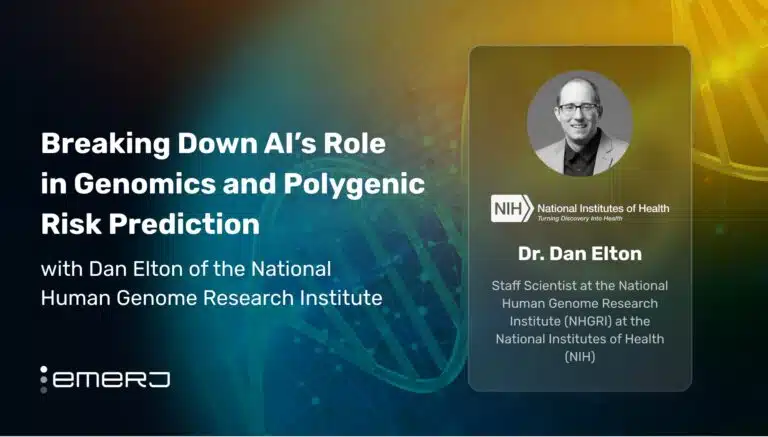This interview analysis is sponsored by Uniphore and was written, edited, and published in alignment with our Emerj sponsored content guidelines. Learn more about our thought leadership and content creation services on our Emerj Media Services page.
Becoming a truly data-driven organization involves first identifying the processes that data should inform and then ensuring that the data the process is informing is reliable, of high quality, and in the appropriate format. Once these criteria are satisfied, the organization can enable its departments to utilize the information by establishing well-defined, organized, and monitored data processes. These changes allow teams to effectively translate insights into actionable decisions, ultimately leading to more informed outcomes.
A proper strategy for data-driven decision-making is now considered essential for several reasons. Firstly, it allows organizations to make more confident and proactive decisions, saving costs in the long run. According to a study published by McKinsey Global in 2014 — years before the AI revolution would take hold — data-driven organizations were already found to be 23 times more likely to acquire customers and 19 times more likely to be profitable.
A more recent McKinsey study of data-driven enterprises from 2022 found that companies with 20 percent of their earnings before interest and taxes (EBIT) contributed by AI are far more likely to engage in growth-minded data practices. The study explains that these practices include delivering information in real-time, having flexible storage that enables ready-to-use data, using operating models that treat data as a product, sharing data with competitors effectively, and empowering chief data officers to generate value for their organizations.
Emerj CEO and Head of Research Daniel Faggella recently sat down with Ciprian Porutiu of Marsh McLennan and Mike Borrelli of Uniphore to discuss the challenges and strategies for implementing AI solutions effectively in enterprises.
Marsh McLennan is a professional services firm in the areas of risk, strategy, and people that provides data-driven risk advisory services and insurance solutions to commercial and consumer clients. Uniphore is an AI vendor specializing in integrating AI technologies to enhance customer experiences across different industries, utilizing generative-, knowledge-, and emotion AI along with workflow automation.
In sharing these differing perspectives, financial services leaders can better understand what management strategies will place them on the right path to wielding data-driven organizational capabilities.
The following article analyzes their perspectives and provides executives with the following critical insights from their conversation:
- Prioritizing repetitive tasks for initial AI adoption: Laying the groundwork for data-driven decision-making by focusing on repetitive tasks for initial AI adoption to establish a foundation for automation and efficiency improvements.
- Leveraging user feedback and diverse data for optimization: Gathering user feedback, leveraging diverse data types, and measuring outcomes to optimize processes and enhance customer experiences.
Guest: Ciprian Porutiu, Vice President, Operations & Delivery for Change Management and Digital Transformation, Marsh McLennan
Expertise: Change management, operational excellence, strategy and roadmap design
Brief Recognition: Ciprian Porutiu is Vice President of Operations & Delivery for Change Management and Digital Transformation at Marsh McLennan. He spearheads operational tasks, such as governance, continuous improvement, portfolio management, and strategic initiatives. He completed a Master of Business Administration in IT Management from Western Governors University.
Guest: Mike Borrelli, Sales Director, Uniphore
Expertise: CX workflows, automation, data integration, sales
Brief Recognition: Mike Borelli is the Sales Director at Uniphore. He finished his Bachelor of Science in Business Administration and Management from Bucknell University.
Prioritizing Repetitive Tasks for Initial AI Adoption
Mike Borelli begins the conversation by highlighting the need to prioritize initiatives with the potential for significant business impact. However, he emphasizes that decision-making process should also consider long-term implications, the broader landscape of AI adoption, and the potential challenges that may arise.
The challenges associated with choosing different AI products for enterprise use create difficulty in verifying their authenticity and efficacy amidst many options. He underscores the risk of data fragmentation if organizations adopt multiple solutions, leading to a need for more objective insight into operations.
“There’s a lot of organizations out there that like to keep your data in a black box. And data sovereignty is so important today, because a lot of the larger vendors out there, they make you pay to get your data. That’s not a good approach, and to Ciprian’s point, it means: How do we make sure that that data is readily accessible and available so that we can make better decisions, then try to figure out where we can automate for that biggest impact to your business?”
—Mike Borrelli, Sales Director at Uniphore
Mike emphasizes to the Emerj executive podcast audience that there isn’t a one-size-fits-all approach to selecting AI solutions, stressing that the choice depends on each business’s unique needs and context. He suggests addressing repetitive and easily automatable tasks to establish a foundational framework. By doing so, organizations can understand their processes and build models and workflows, such as customer journeys, via various communication channels like voice or chat.
That initial groundwork lays the foundation for further automation and assistance, such as implementing agent assist platforms. Additionally, Mike hints at the potential for different advancements, such as after-call work summarizations, to continue augmenting human capabilities and driving efficiency improvements.
From his vantage point, Ciprian articulates a philosophical and practical approach to addressing the challenges of data management and semantics in the context of agility across different regions. He suggests taking small steps and testing what works before extending further, echoing Mike’s earlier sentiment about incremental progress.
However, Ciprian also acknowledges the linguistic and semantic differences between countries for multi-national enterprises, which challenge standardizing data collection and interpretation. He envisions a future where large language models can sift through unstructured data without rigid taxonomies. Such an approach would eliminate the need to organize data into separate warehouses or lakes, as they now sit in one centralized location.
Leveraging User Feedback and Diverse Data for Optimization
Ciprian then suggests starting with more commoditized tasks where direct access to information can benefit both the organization and the customer. Organizations can streamline operations and improve efficiency by automating routine tasks, such as claims processing.
He also highlights how automation can lead to quick wins, such as closing specific claims automatically based on predefined rules and thresholds.
“This is where the interface of the expert digests that particular output of LLMs, or the visual intelligence of data reporting, into something that resonates with the problem. Now, many times we create solutions instead of solving problems. So the solution becomes the beautiful tool that we just created that can respond to any type of interaction without thinking that maybe the problem of the customer is something else.”
– Ciprian Porutiu, Vice President of Operations & Delivery for Change Management and Digital Transformation at Marsh McLennan
Mike stresses the significance of gathering user feedback during deployment to ensure that bot designs meet customer expectations and avoid costly redesigns. Additionally, he mentions a growing trend among enterprises to capture and leverage various types of data (video, voice, chat, etc.) to build proprietary enterprise language models (ELMs).
“And you can iterate on it over the course of years so that it’s tuned for different countries, different languages, in the different semantics that you need to get to make it powerful enough that your customers are happy with that service as well. Then, you can leverage that and self-service. So I think that that’s where it’s going to start to go because large enterprises are going to be more comfortable with something that they know is more in-house knowledge base.”
–Mike Borrelli, Sales Director at Uniphore
Cyprian discusses the concept of a ‘flow framework,’ which focuses on the transition from project to product by connecting various software development layers to deliver value in terms of increased revenue, efficiency, customer experience, and compliance.
He emphasizes the importance of measuring outcomes rather than just outputs, which shifts the paradigm toward achieving tangible business results:
“The fact that we have to measure the outcomes versus the outputs is what changes the paradigm in there, where you get those types directly with the ability to switch gears very quickly. This is why a short look in the database, where you create the modules of the software, translates into value right away.
Now, if the process brings value because the customer experience immediately increases, then you add on that. If you see that the reaction is negative, then you can very easily stop doing it because the connection between the business value and the language of the technical people that create those modules is clear.”
–Ciprian Porutiu, Vice President, Operations & Delivery for Change Management and Digital Transformation at Marsh McLennan
In his closing comments, Mike emphasizes the importance of a feedback loop, analytics, and data consolidation in deploying User Accepted Testing (UAT). He stresses the need to iterate on these processes throughout the deployment to ensure that insights are obtained early and often, allowing for fine-tuning and optimization. Mike acknowledges the valuable insights that sentiment analysis and tone detection can provide in understanding customer interactions.



















